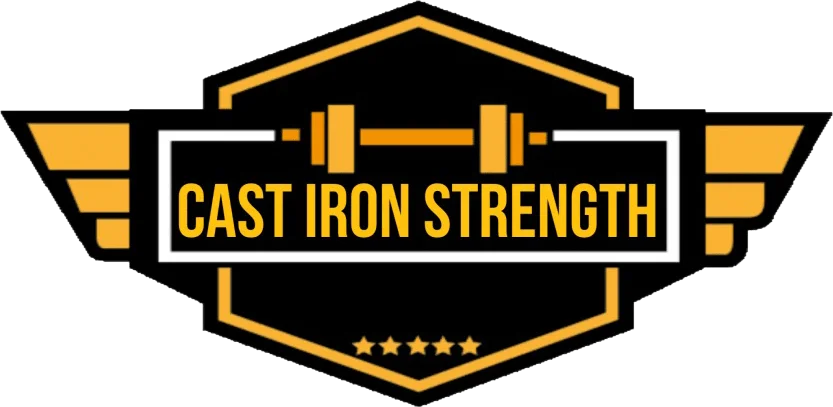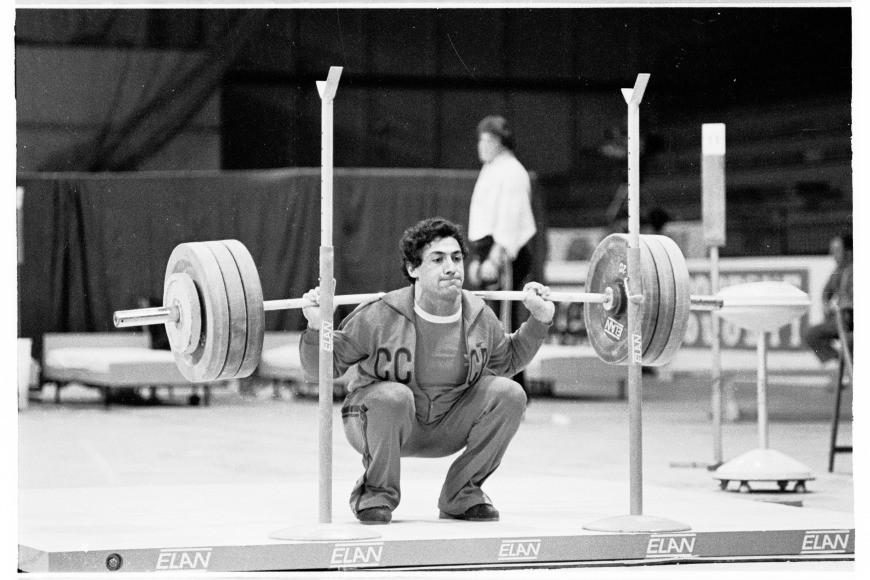I’ve given CrossFit a fair amount of shit in my time, I won’t shy away from it some of the movement standards allowed by boxes and at competitions doesn’t really do much to put the sport in a good light. However, that being said its popularity and the ability of some of the athletes involved in the sport cannot be denied.
For me, it represents an incredibly interesting problem to solve as a coach since there are a whole host of different modalities, exercises and energy systems involved in the sport. As a strength and conditioning coach, it is also a great opportunity to see what the outcome of what you are doing is as you have objective outcomes for pretty much every event. Time to completion, weight lifting, reps completed and so on and so on.
I am actually about to begin working with my first CrossFit athlete in the capacity to actually train her to be more competitive at CrossFit and I am excited to get started. I am going to use this article to think out loud to the world and flesh out some of the idea’s I have.
What are the raw materials of a CrossFit Champion?
The good thing about CrossFit is that it’s an amalgamation of effectively weightlifting, powerlifting, gymnastics and circuit training the sport is heavily reliant on four factors ranked in order of importance and length needed to acquire
- Technical ability and efficiency in the skill aspects of the sport.
- Maximal and relative strength in key barbell and bodyweight movements.
- A high level of aerobic conditioning to allow high training loads and better recovery between tasks and sessions.
- Specific work capacity relevant to the events being tested.
Technical ability will take a long time to develop and should be a focal point of every session the athlete engages with the more efficient they are the less energy they will expend in high workload tasks and the better they will be able to sustain higher volumes of work as they won’t overload the wrong muscle groups in training.
Strength really is the key physical attribute for a games athlete without being brutally strong in the basic barbell lifts, being competent in weight lifting and having a huge reserve of relative strength in bodyweight movements you’re dead in the water. Technical work will work alongside strength development but again it takes years not months to create a strong athlete.
The next most important physical component as a games athlete is to have a massive engine. Developing your aerobic ability is a much quicker process than becoming a good lifter or getting strong but it is also hugely important. It is possible to be competitive and pretty fit but if you want to go somewhere in the sport then you’re going to need to develop your aerobic capacity as fully as you can.
The next part of the puzzle is in a way the least important but also the one bit that is going to make the difference between being a competitor and a threat of winning. Specific work capacity in events such as Fran, Grace and the events at the competition is going to be important for taking your base attributes (Technical ability, Strength and Conditioning) and put it into a specific context.
How does this break down into quantifiable targets and goals?
Once you are clear on the key tenants of the programme then you need to where possible see where you need to get to as an athlete or as the coach where your athlete needs to develop. Below is a very useful chart on the difference between a regional and a games CrossFit athlete.
Whilst this figure provides us with the differentiating factors between a regional and a games athlete what it also gives us are some aspirational targets from strength and bench mark workout standards. We can take one look at this table and see instantly where our athlete or you have major weaknesses. If you, for instance, have great maximal strength but are lacking in weightlifting technique and are quite far off the snatch and clean and jerk numbers than you would be better served taking time away from your strength to work on your weaknesses.
If you are in a position where you are strong in the weightlifting and powerlifting exercises, then you are in a great position because all you have to do is work on your aerobic capacity and specific conditioning.
Organising the Training
The biggest balancing act is how and when to organise all of these training sessions and physical attributes. One of the biggest factors when organising this varied a training programme is splitting it up for recovery is factored in and optimised and making sure you are minimising crosstalk and interference between physical attributes. Maximal strength and Maximal endurance activities are juxtaposed to each other and some adaptations of one directly and negatively affect the other.
One frame work you could look to use would be the high/low separation furthered and popularised by world renowned sprinting coach Charlie Francis. The basic idea behind this is you do highly “CNS” demanding tasks on your high days and look to do low “CNS” demanding tasks on your low days. It’s a good way of pulling apart the training and it’s an idea we can further.
Capacity Days – For the purposes of splitting up this training we are looking at “capacity days” as the days ear marked to work on the more fatiguing and higher threshold attributes of the sport.
- Maximal strength training
- Work capacity (WODs, Body weight rep outs)
- Heavy weight lifting
- High lactic inducing activities
Efficiency Days – the next split we will be looking at is trying to make the athlete more efficient either at movement or through energy system work this will incude
- Aerobic work (intervals, longer events and steady state)
- Skill work
- Recovery
We will also look to use and AM/PM split for the training with more complex or skill or strength reliant tasks being done first and then hopefully with a 6-hour minimum gap the PM shall be reserved for energy system or less complex/strength reliant work.
Example Split
Monday (Capacity)
AM – Strength – Snatch and Squat
PM – Upper body strength and WOD/Capacity work
Tuesday (Efficiency)
AM – Clean and Hand stand technical work
PM – Run and Swim
Wednesday (Capacity)
AM – Strength – Deadlift, Upper body and Jerk
PM – Rest
Thursday (Efficiency)
AM – Snatch and Muscle up technical work
PM – Sprint intervals and Row
Friday (Capacity)
AM – Strength – Clean and Squat
PM – Upper body and WOD/Capacity work
Saturday (efficiency)AM – Technical Work and Swim
PM – RecoverySunday – Active Recovery
How you programme the actual content of the sessions needs to be intertwined you should look to have higher threshold work or more taxing strength being performed when total volume is lower and when aerobic and energy system work is of lesser volumes. Likewise, when you are looking at a higher volume of strength it is a good time to have higher volume across the programme with energy system work.
You will appreciate from the volume and intensity chart below that organising so many elements in a programme isn’t a straightforward task. Before we go planning out this training you need to accept that all variables are linked and a sudden spike in one will have a knock on effect on the rest so you need to juggle them all at the same time. An example of this in practice if you are planning on getting a good increase of strength during a training phase and then you also decided you’re going to do a shit tonne of work on 3 skills and increase your conditioning massively you will achieve being fucking knackered.
The trick is to keep elements ticking along at a slow rate and then periodically emphasising your weaknesses to bring them up closer to the rest of the physical attributes you are trying to improve on.
If you want to get good random attribution is going to achieve nothing
You are not going to get good at any of the factors involved in the sport just by randomly spamming training. Pulling WODs out of your arse and running 5/3/1 for your strength programme isn’t going to produce good athletes. It might make some people lean just as any exercise programme paired with a calorie deficit will make people lean but it’s not going to produce performance or make an athlete steadily better at each of the attributes needed for the sport.
You can’t really just slam programmes together either as they won’t work with each other in a coherent manner. It would be like throwing smolov into a rugby player programme in season, that is to say completely and utterly fucking retarded. You need context of the wider programme so you’re not just lobbing things into the programme, then wonder 3 months down the line why everyone is tired and getting overuse injuries.
If an athlete has PB’d in something and you can’t really pin point the work that has led to them producing that result than you’re not running a program you’re running an exercise wheel of fortune.
You need to go through your plan for each element and see where you are looking to apply load/induce fatigue and where are you going to let up and let the athlete get some breathing space. The normal paradigm of come in smash your fucking box in and then lie on the floor and send an insta will get you the level of novice/intermediate without planning you’re not going to get anywhere unless you luckily hit the nail on the head or you are born with a serious genetic tool kit. Even if you have one or both of these you would still be better off in a programme where variables are controlled and off set against each other.
Limit your activity and cut the shit
When you have a lot of things to do then you need to get down to the billy basics of what is going to make the difference between you being good and great. Working on entertainment exercises isn’t going to add to your bottom line performance so you should be looking to ruthlessly cull the inanities from your programme. Short, effective and adaptation inducing workouts rather than 2-3 hours of meandering about the gym not really paying attention to your practice and then lobbing in a “WOD” at the end.
You can do a fucking brutal lactic session in 4 minutes that will induce a hell of a lot of adaptation, yeah you could do it for 10 rounds but then you’re losing the fucking point in the drill. It’s designed to target high threshold lactic activities which if done at the correct intensities can be done ONCE. Doing something hard more times doesn’t make it more effective it just makes it pointless.
Similarly, with lifting yes there are 30,000 squat variations or whatever the number might be but limiting yourself to front squat, back squat and snatch and getting brutally fucking strong is going to do more for your overhead squat than trying to do an AMRAP with whatever % you have pulled out of your hole.
If you take a targeted, objective approach where you look to make progress in your key objectives and always relate your conditioning work to your “meaningful task” then you are going to do so much better as an athlete.
I will admit I know next to fuck all about CrossFit at the minute and that will change as I train more of these athletes but I do know something about the organisation of training and that is something I am very excited to getting my teeth into and improving for some athletes in this sport.
Marc




















